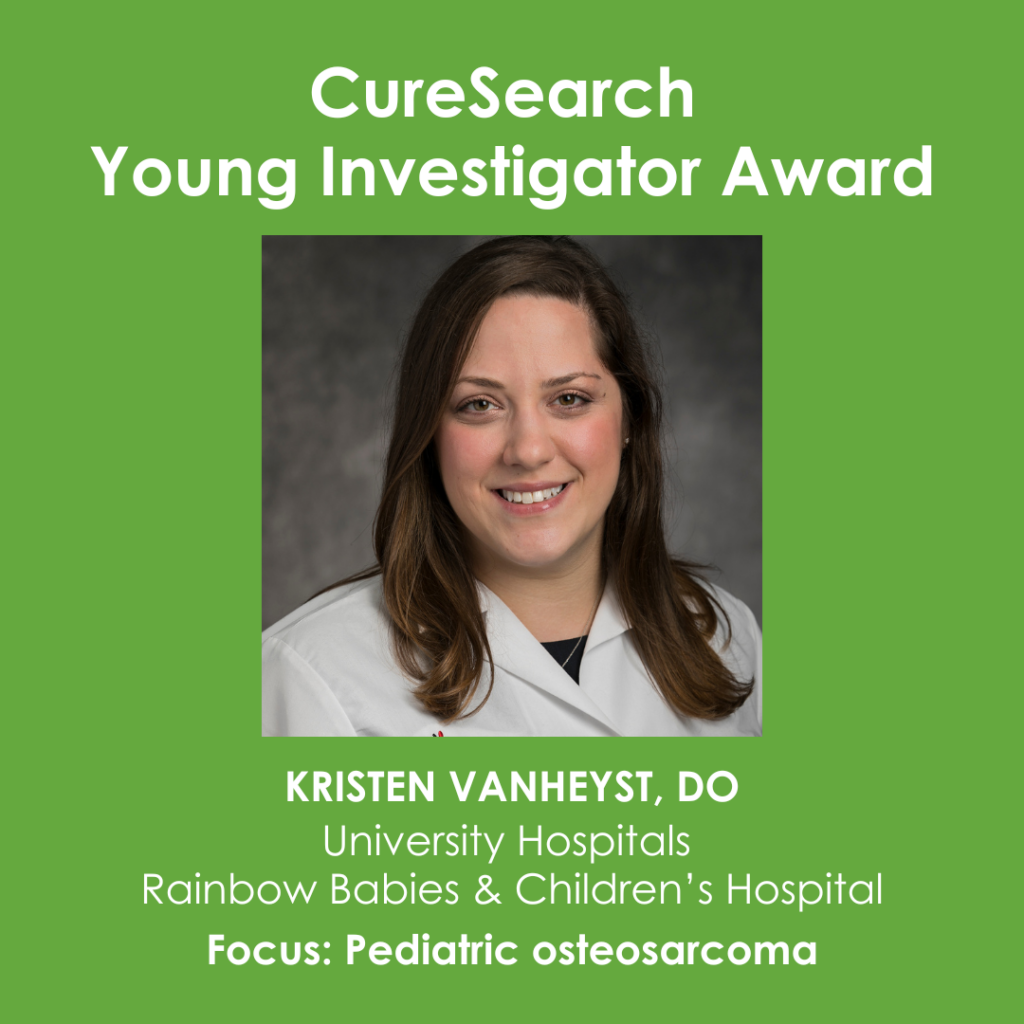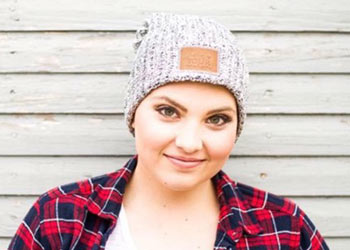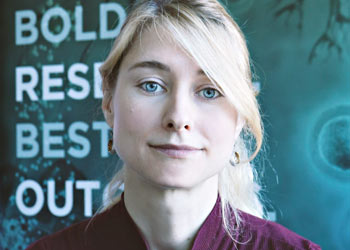A closer look at Dr. VanHeyst’s osteosarcoma study

The current standard treatment for osteosarcoma, a bone cancer, hasn’t changed much in decades. The chemotherapy that osteosarcoma patients receive is harsh, and the side effects are only magnified in children. Osteosarcoma is an aggressive cancer, and for patients with metastasis – cancer that has spread to other parts of the body – survival outcomes remain especially grim.
With funding from her CureSearch award, Dr. Kristen VanHeyst is exploring a new treatment, called immunotherapy, for osteosarcoma. Immunotherapy has recently shown promise in other types of cancer, although it hasn’t been very effective for osteosarcoma so far. Research like that of Dr. VanHeyst and team is critical in cracking the code and eventually delivering a safer, more effective treatment for osteosarcoma patients.
An Innovative Approach: Targeting an immune suppressive molecule
Dr. VanHeyst’s team is focusing on a molecule called Transforming Growth Factor-Beta (TGF-ß), which is produced in tumors. This molecule makes the tumor grow and makes it harder for the patient’s immune system to fight against it.
Dr. VanHeyst wants to target TGF-ß, using the drug Vactosertib, to slow tumor growth and help the immune system fight against the cancer. She and her colleagues have demonstrated that the drug can slow down the growth of cancer in mice with weak immune systems. However, complete disease control has not yet been achieved. Dr. VanHeyst hypothesizes that combining the drug with another type of treatment, called an immune checkpoint blockade, might work better.
The immune checkpoint blockade is a special treatment that helps our immune system fight cancer by blocking signals that cancer cells use to hide. When these signals are blocked, our immune system becomes better at finding and attacking the cancer cells. It’s like taking off a disguise that the cancer cells wear, so our immune system can see them clearly and fight them off. This type of treatment has been helpful in some other types of cancers, and many scientists have recently been studying it more in order to understand how it can be used to help even more patients.
Dr. VanHeyst will also lead a clinical trial to test the treatment plan on children with osteosarcoma. The team is working with a pharmaceutical company, called MedPacto, Inc., to develop the trial. They will start by testing Vactosertib alone to ensure it is safe and effective. If it looks promising, they will then try combining it with the immune checkpoint blockade. They will closely study the patients’ response to the treatment with the goal of improving survival rates. They will also collect samples from the patients to study their genes and proteins to better understand how the treatment is working. Dr. VanHeyst is working to ultimately lower the age limit for enrollment in clinical trials, and give more pediatric patients access to novel therapeutic options.
Ultimately, the researchers hope that the drug Vactosertib, either alone or in combination with another drug, will provide a more hopeful outlook for patients with osteosarcoma. These types of learnings can be pivotal in driving breakthroughs in cancer treatment, now and in the future.



